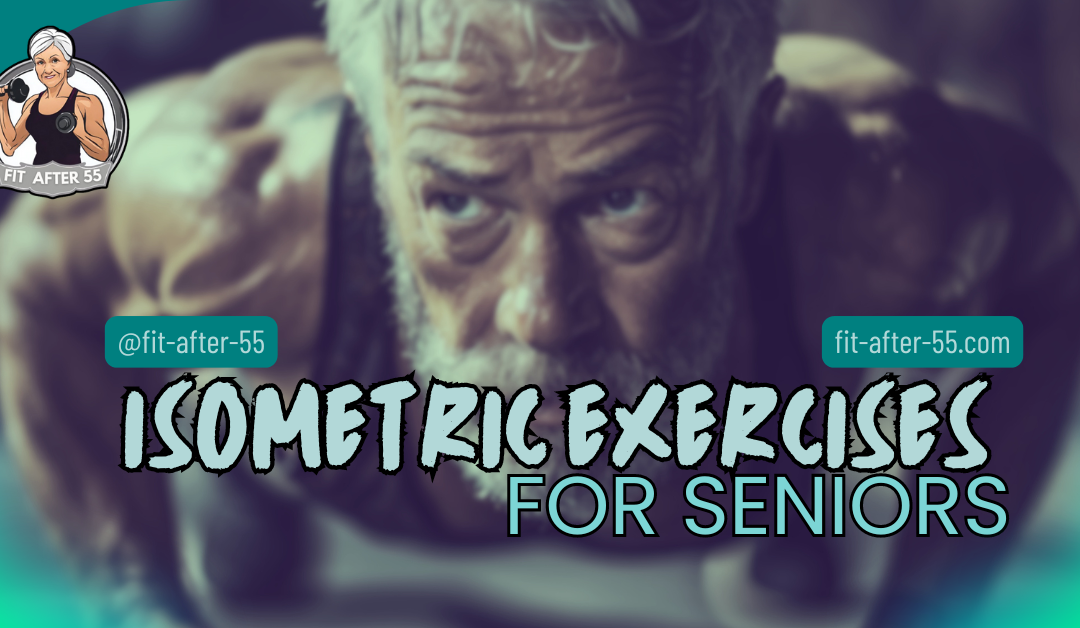Isometric Exercises for Seniors offer a safe and effective way to stay strong and mobile as you age. Unlike traditional workouts, these low-impact movements don’t require lifting weights or straining your joints. Instead, they help you build strength and stability by holding positions that engage your muscles without moving them. In this guide, we’ll explore the best isometric exercises for seniors and safety tips and precautions to ensure you get the most out of your routine while protecting your health. Ready to discover how isometric exercises can enhance your daily life? Let’s dive in!
Isometric Exercises for Seniors: A Beginner’s Guide to Gentle Strength Training at Home
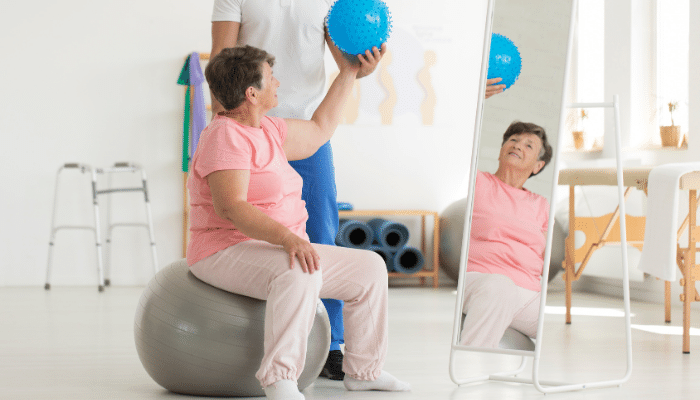
Staying strong and active as we age is key to a happy, healthy life. Isometric exercises for seniors offer a great way to build strength without putting too much stress on their bodies. These exercises involve holding still positions instead of moving, which can be safer and easier for older adults.
Isometric exercises can help seniors improve strength, balance, and flexibility without special equipment. You can do them at home, in the park, or watching TV. They’re perfect for beginners or those who last exercised a while ago.
Ready to give isometrics a try? We’ll show you some simple exercises to get started. You’ll learn to work your upper body, lower body, and core muscles safely and effectively. By the end of this guide, you’ll have a new set of tools to help you stay fit and feel great.

Key Takeaways
- Isometric exercises are low-impact and safe, ideal for building strength without stressing joints.
- Most isometric exercises require no special equipment and can be performed almost anywhere, making them accessible for home workouts.
- Start with shorter hold times (10-15 seconds) and gradually increase as strength improves to avoid overexertion.
- Incorporate exercises like wall sits, planks, and arm presses into daily routines or specific workout sessions for balanced strength development.
- Before starting any new exercise routine, consult a doctor and listen to your body to prevent injury.
Understanding Isometric Exercises
Isometric exercises are a unique form of strength training that can be very helpful for seniors. These exercises involve still positions that engage your muscles without moving your joints.
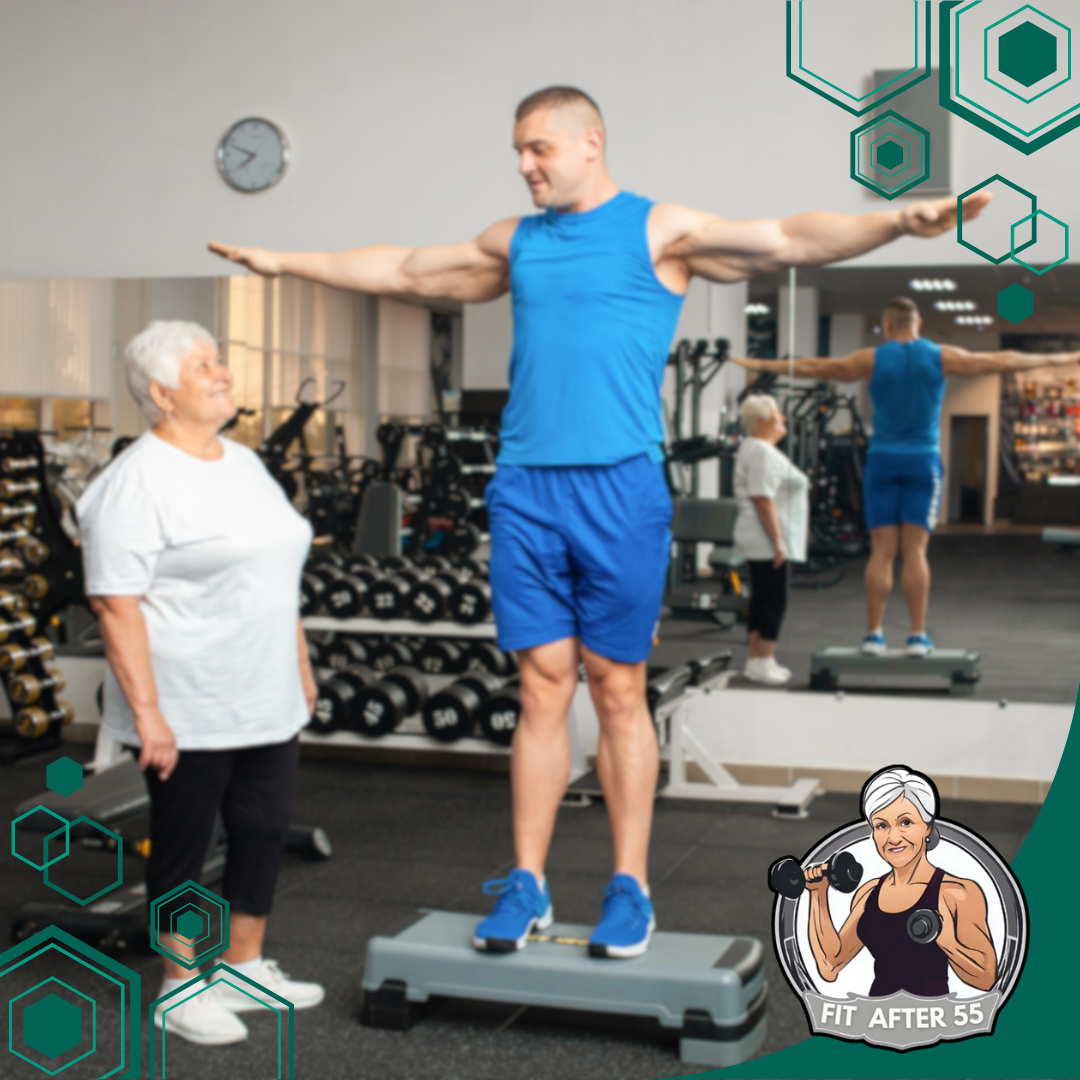
Definition and Principles
Isometric exercises are static contractions of muscles where you push or pull against an immovable object or your body weight. The key principle is that your muscles work hard, but your joints don’t move. This exercise can be done anywhere, anytime, with little equipment. Some common isometric exercises include:
- Wall sits
- Planks
- Isometric bicep curls
These exercises typically involve holding a position for a set time, usually 10-30 seconds. You can adjust the difficulty by changing how long you hold the position or how much force you apply.
Benefits for Seniors
Isometric exercises offer several advantages for older adults:
- Safety: They put less stress on your joints, making them ideal for arthritis or joint pain.
- Improved Strength: Regular practice can help maintain and even increase muscle strength.
- Better Balance: Many isometric exercises engage your core, enhancing your stability.
- Flexibility: Some isometric poses can help improve your range of motion over time.
- Convenience: You can do these exercises anywhere, without special equipment.
Isometric training can also improve your posture and body awareness. This can help prevent falls and make daily activities easier.
How Isometrics Differ from Other Exercises
Isometric exercises are unique compared to other types of exercise:
- No Movement: Unlike dynamic exercises, isometrics don’t involve moving your joints through a range of motion.
- Targeted Strength: Isometrics build strength at specific joint angles, while dynamic exercises work muscles through a full range.
- Low Impact: Isometrics puts less stress on your body than many other forms of exercise.
- Short Duration: Most isometric holds last only 10-30 seconds, making them good for short bursts of effort.
These differences make isometric exercises for seniors a great option for those who may find another exercise challenging. They can be easily adjusted to fit your fitness level and goals.
Check out this additional video to learn more about understanding isometric exercises.
By: Integrative Chiropractic and Extremities
Getting Started with Isometrics
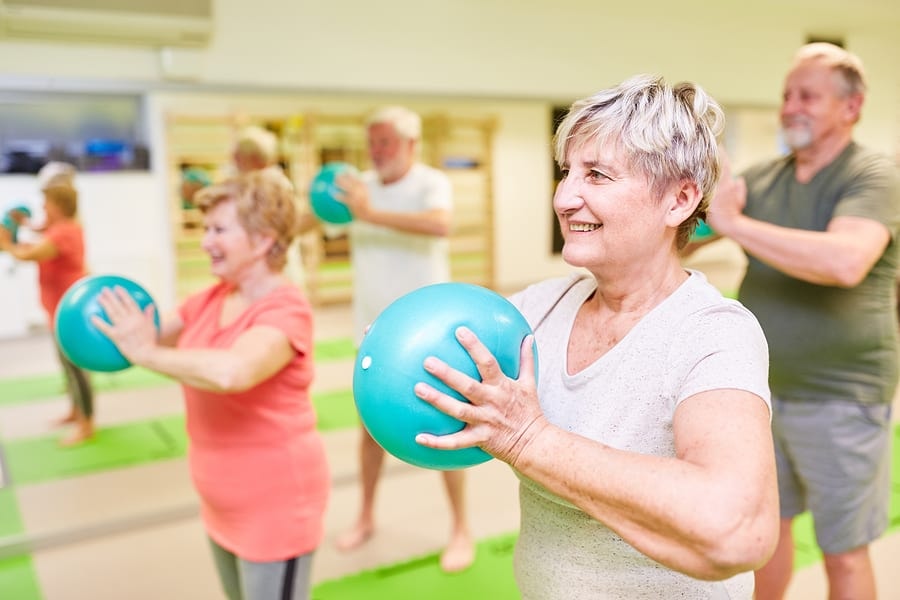
Isometric exercises are easy to start and require little equipment. They can be done almost anywhere and are great for building strength safely.
Safety First: Consult with Your Doctor
Before starting any new exercise routine, including isometric exercises for seniors, talk to your doctor. This is especially important if you have health issues or injuries. Your doctor can advise on which exercises are safe for you. Ask about:
- Any movements to avoid
- How often to exercise
- Signs to stop exercising
Listen to your body. If you feel pain, stop the exercise. Start slow and build up over time. This helps prevent injury and soreness.
Basic Equipment Needed
You need very little to start isometric training. Most exercises use your body weight. Here’s a simple list to get you going:
- Comfortable clothes
- Supportive shoes
- A chair or wall for balance
- A timer or watch
Some exercises might be used:
- Resistance bands
- Small weights
- A yoga mat
Isometric exercises only need a little equipment. This makes them perfect for home workouts or when traveling.
Setting Realistic Goals
Set small, achievable goals when you start. This keeps you motivated and helps track progress. Here are some tips:
- Start with 2-3 sessions per week
- Hold each exercise for 5-10 seconds
- Do 3-5 repetitions of each exercise
- Gradually increase hold time and reps
Write down your goals. Track your progress in a notebook or app. Celebrate small wins along the way. Remember, consistency is key. Regular practice will lead to better strength and balance over time.
Isometric Exercises for Upper Body
Isometric exercises for seniors can help build strength without putting too much stress on their joints. These exercises target different upper body parts and can be done safely at home.
Arm Presses
Arm presses are great for building strength in your biceps and triceps. You can do these sitting or standing.
- Start by pressing your palms together in front of your chest. Push your hands against each other as hard as you can for 10-15 seconds. Relax and repeat 3-5 times.
- For another variation, press your palm against a wall. Push firmly for 10-15 seconds, then switch arms. This works your shoulder muscles, too.
- Remember to breathe normally during these exercises. If you feel any pain, stop right away.
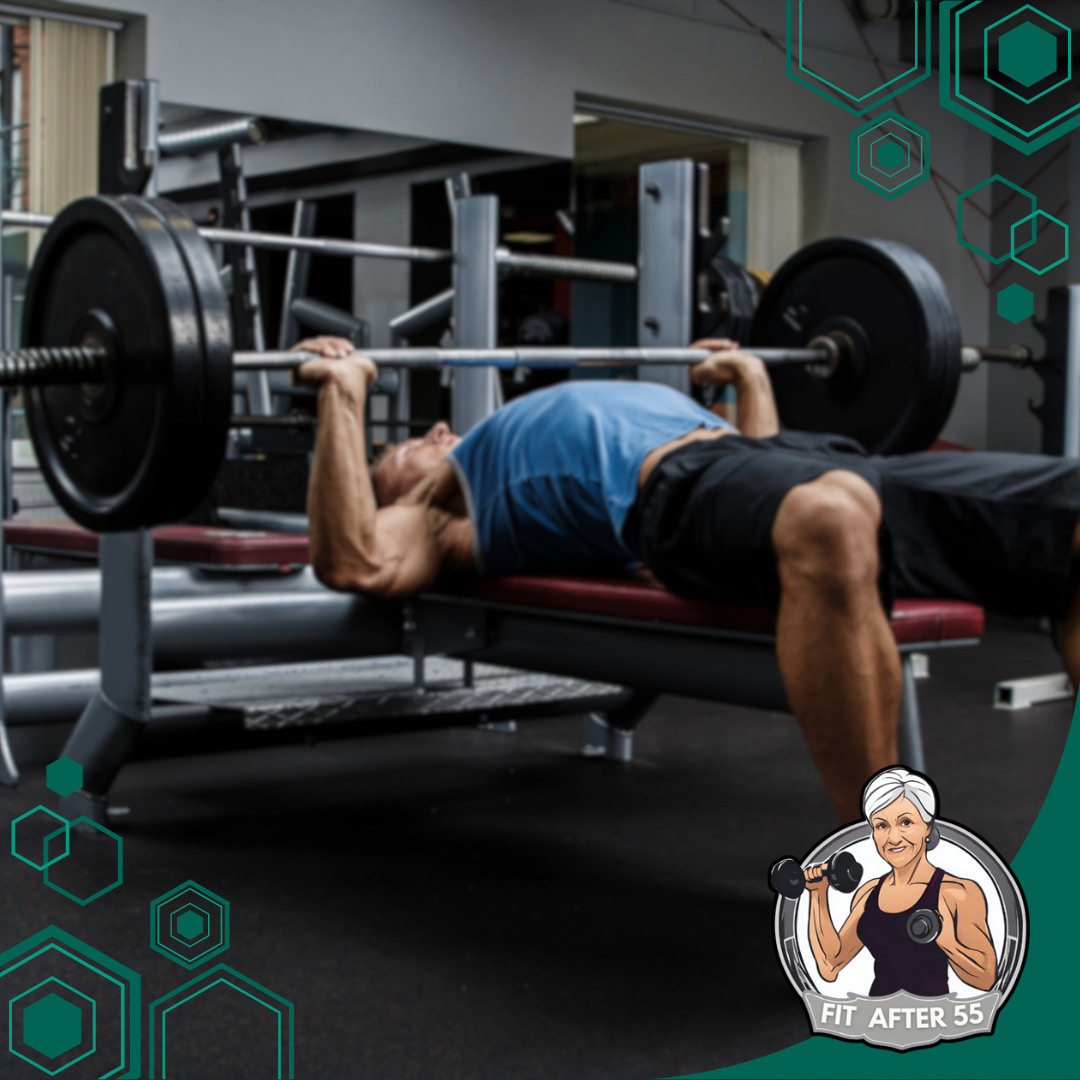
Wrist Holds
Wrist holds can improve grip strength and help with daily activities like opening jars.
- Sit at a table and place your forearm on the surface, palm up. Use your other hand to press down on your upturned palm. Resist the pressure for 10-15 seconds.
- Next, turn your palm down and press against the table. Hold for 10-15 seconds. Do 3-5 reps for each position.
- You can also use a small ball or rolled-up towel. Squeeze it in your hand for 10-15 seconds, then relax. Repeat with both hands.
Shoulder Blade Squeeze
This exercise helps improve posture and reduces upper back pain.
- Sit or stand with your arms at your sides. Slowly squeeze your shoulder blades together as if you’re trying to hold a pencil between them.
- Hold this position for 5-10 seconds, then relax. Repeat ten times. Try to keep your shoulders down and away from your ears.
- You can do this exercise for a challenge with your arms raised to shoulder height. This targets your shoulder muscles more.
- Always start slowly and increase the duration as you get stronger. If you have any shoulder issues, check with your doctor first.
Did You Know?
The best isometric exercises for beginners, especially older adults, include wall sits, planks, and isometric bicep curls. Wall sits are excellent for building leg strength. To perform them, stand with your back against a wall and slowly slide down until your thighs are parallel to the ground, then hold this position. Planks are effective for core strength; start on your forearms and toes, keep your body straight, and hold for as long as possible. Isometric bicep curls are beneficial for arm strength. To do these, have a lightweight at a 90-degree angle and maintain the position.
Isometric Exercises for Lower Body
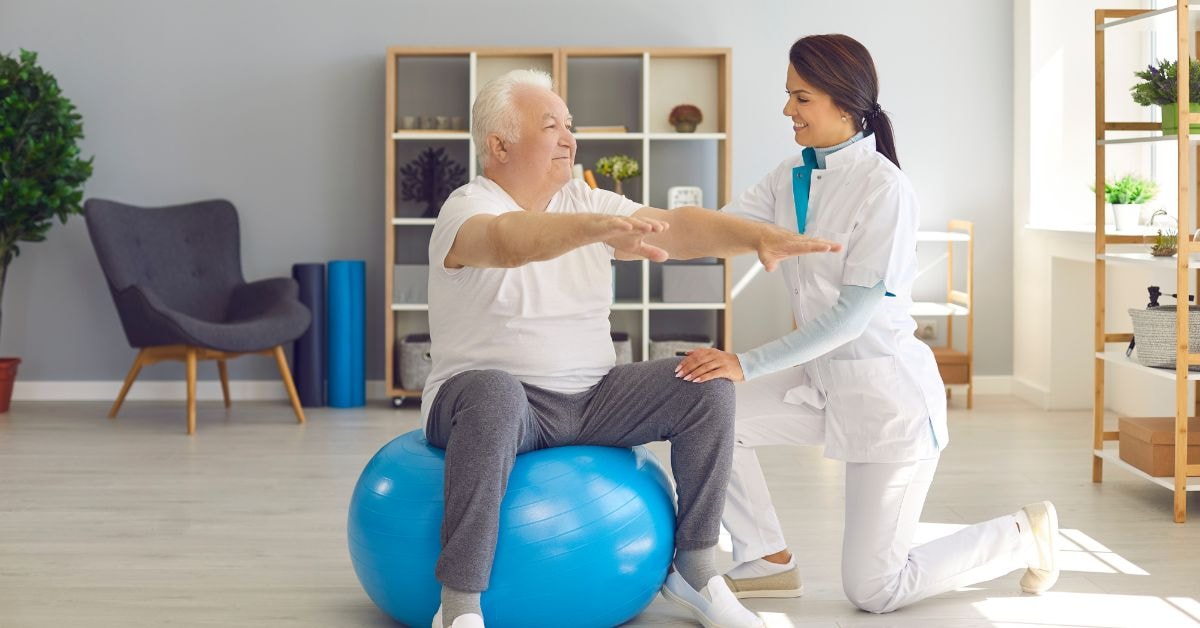
Isometric exercises for seniors can help improve leg strength and stability without putting too much strain on their joints. These exercises focus on holding steady positions to build muscle endurance.
Chair Squats
Chair squats are a great way to build leg strength. Start by sitting in a chair with your feet flat on the floor.
- Slowly stand up halfway, keeping your back straight. Hold this position for 10-30 seconds, depending on your strength.
- Gradually lower yourself back to the chair. Repeat this exercise 5-10 times.
- As you get stronger, try holding the position for longer. You can also stand up further before holding the pose.
- Remember to breathe normally during the exercise. If you feel any pain, stop and rest.
Wall Sits
Wall sits target your thighs and core muscles. Find a smooth wall and lean against it.
- Slide down until your thighs parallel the ground, like sitting in an invisible chair. Keep your back flat against the wall.
- Hold this position for 10-30 seconds. Rest for a minute, then repeat 3-5 times.
- If this is too hard, don’t slide down as far. You can gradually increase the time as you build strength.
- Make sure your knees don’t extend past your toes. Keep your weight in your heels to protect your knees.
Leg Pushes
Leg pushes work your leg muscles without moving. Sit in a sturdy chair with your back straight.
- Lift one foot slightly off the ground. Push your heel forward as if trying to slide the chair. Hold for 5-10 seconds.
- Next, pull your heel back towards the chair, holding again for 5-10 seconds. Do this 5-10 times with each leg.
- You can also do both legs at once. Push both feet into the ground as if trying to move the chair forward.
- These exercises are gentle on your joints but still build strength. If you feel any pain, stop and rest.
Core Strengthening Isometric Workouts
Isometric exercises for seniors can help build core strength without putting too much stress on their joints. These workouts focus on holding still positions to engage and strengthen the muscles around your midsection.
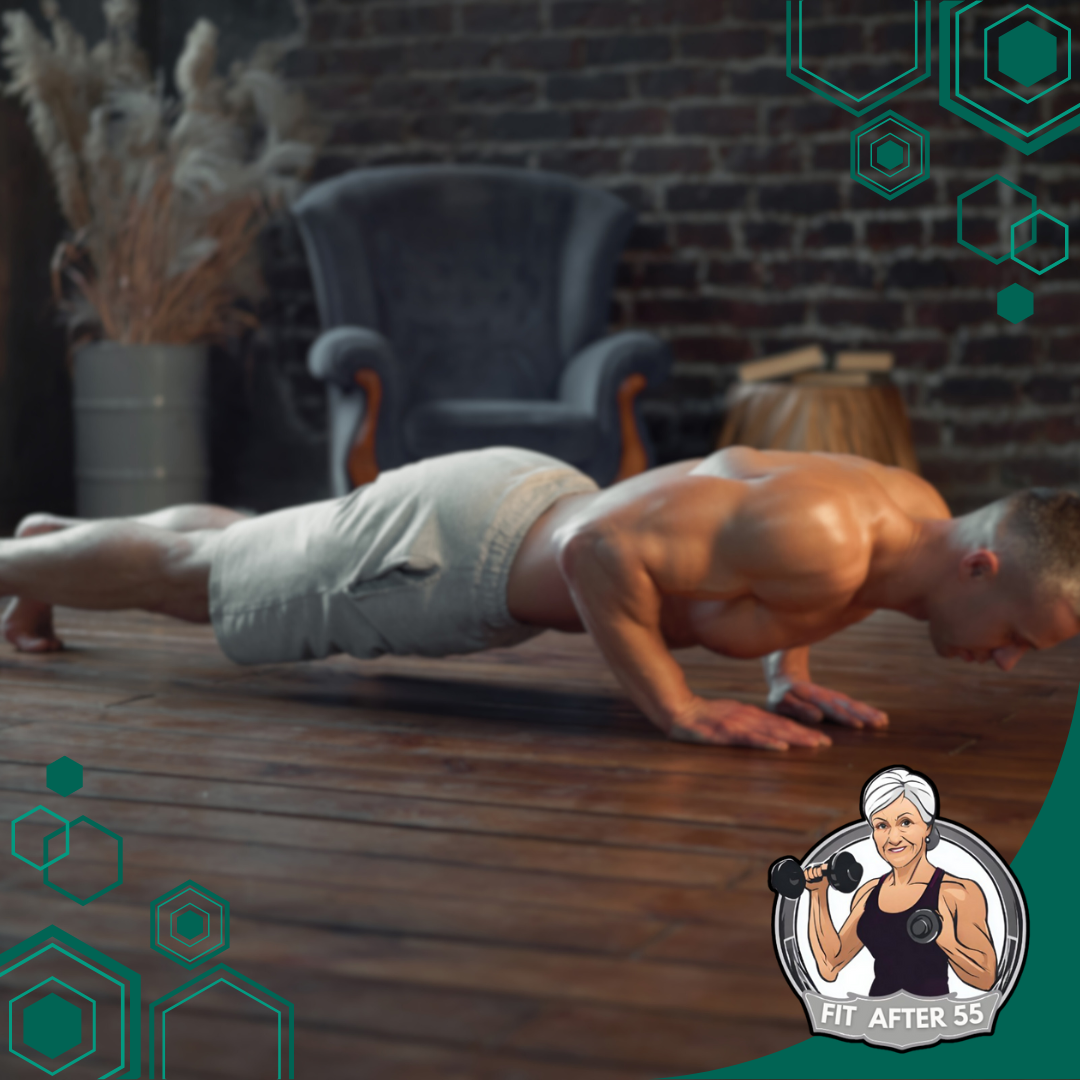
Plank Holds
Planks are great for working your entire core. To do a plank:
- Lie face down on the floor.
- Lift your body onto your forearms and toes.
- Keep your body straight from head to heels.
- Hold this position for 10-30 seconds.
If a full plank is too hard, try it on your knees instead of your toes. As you get stronger, try to hold the plank for longer. Aim to do three sets, resting for 30-60 seconds between each hold. Remember to breathe slowly and steadily while holding the plank. If you feel any pain in your back, stop the exercise immediately.
Abdominal Squeezes
This exercise targets your deep abdominal muscles. Here’s how to do it:
- Sit in a chair with your back straight.
- Place your hands on your stomach.
- Take a deep breath in.
- As you breathe out, tighten your abs as if trying to pull your belly button towards your spine.
- Hold for 5-10 seconds, then relax.
Try to do 10-15 repetitions. As you get better, hold the squeeze for longer. This exercise is gentle but effective for strengthening your core. You can do this exercise anytime, watching TV or reading a book.
Back Extensions
Back extensions help strengthen the muscles in your lower back. To do this exercise:
- Lie face down on the floor.
- Place your hands by your sides.
- Lift your head and chest slightly off the floor.
- Hold this position for 5-10 seconds.
- Slowly lower back down.
Start with 5-10 repetitions. If this is too hard, you can keep your feet on the floor and lift your upper body. As you get stronger, try lifting your legs a little, too. Always move slowly and stop if you feel any pain. This exercise can help improve your posture and reduce back pain.
Integrating Isometrics into Daily Life
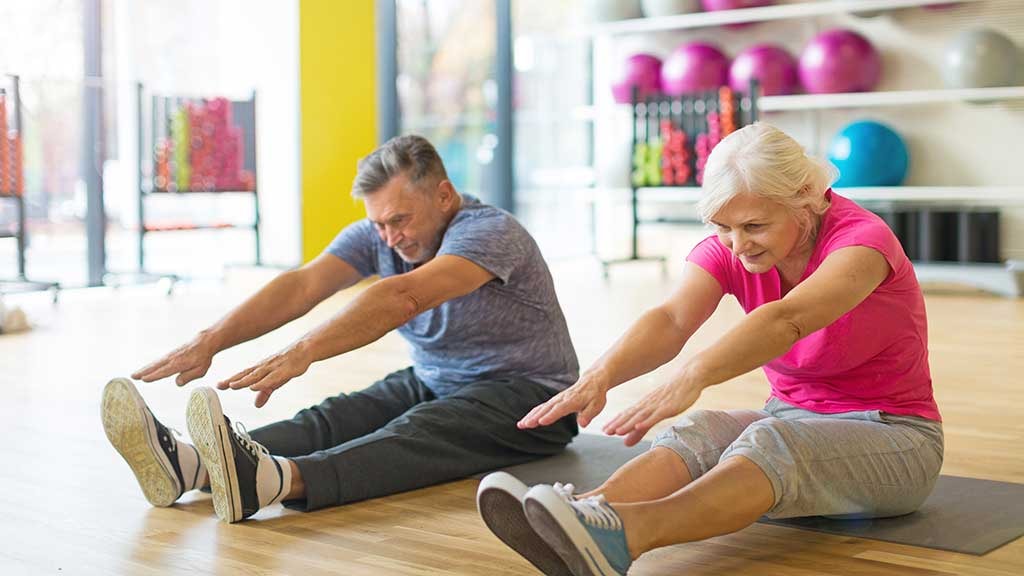
Isometric exercises for seniors can fit easily into your daily routine. You can do them almost anywhere, anytime. They only need special equipment or a little space.
Incorporating Exercises into Everyday Activities
Look for chances to do isometrics during your daily tasks. When you brush your teeth, try wall sits. Stand on your toes while waiting in line at the store. Do hand presses while watching TV. In the kitchen, do counter pushes while waiting for water to boil.
Squeeze a small ball or stress toy while reading. Try calf raises when you talk on the phone. These small efforts add up. They help keep your muscles strong without taking extra time from your day.
Maintaining a Routine
Set reminders on your phone or stick notes around your home. This can help you remember to do your exercises. Try to do isometrics at the same time each day. This helps form a habit. You might do the following:
- When you wake up
- Before meals
- During TV commercials
- Before bed
Start small. Aim for 1-2 exercises a day. Slowly add more as it becomes part of your routine. Keep a log of your exercises. This can help you stay on track and see your progress.
Adapting Exercises to Your Ability Level
Listen to your body. If an exercise hurts, stop. You can change exercises to fit your needs.
- For wall sits, start with a few seconds. Add time as you get stronger. If standing is hard, try seated isometric exercises.
- Use props if needed. A chair can help with balance. Resistance bands can make some moves easier.
- Don’t push too hard. Gentle tension is enough. You should be able to breathe normally during each hold.
Remember, any effort is reasonable. Even small amounts of exercise can help you stay strong and healthy.
Progress Tracking and Motivation
Keeping tabs on your isometric exercises for seniors’ journey is key. It helps you see how far you’ve come and keeps you going strong. Let’s look at some ways to track your progress and stay motivated.
Setting Up a Progress Journal
Start a simple journal to record your workouts. Write down the exercises you do, how long you hold each position, and how you feel after. You can use a notebook or a fitness app on your phone. Take notes on:
- Exercise names
- Hold times
- Difficulty level
- How your body feels
Try to jot down something after each session. This helps you see patterns and improvements over time.
Celebrating Milestones
Set small goals for yourself and celebrate when you reach them. You may want to hold a plank for 30 seconds or do wall sits thrice weekly. When you hit a goal:
- Treat yourself to something nice
- Tell a friend or family member.
- Put a gold star in your journal.
These little wins boost your confidence and make exercising more fun.
Staying Motivated
Keeping up with exercise can be tough some days. Here are tips to stay on track:
- Find an exercise buddy to keep you accountable.
- Mix up your routine to avoid boredom.
- Set a regular exercise time that works for you.
Remember why you started. You may want to feel stronger or have better balance. Keep that goal in mind when you feel like skipping a day. Put up inspiring quotes or pictures where you exercise. They can give you a boost when you need it most.
Safety and Injury Prevention

Isometric exercises for seniors can be safe when done correctly. Taking proper precautions helps avoid injuries and ensures a positive experience. Always listen to your body and adjust as needed.
Recognizing Your Limits
Pay attention to how your body feels during isometric exercises. If you notice pain or discomfort, stop the exercise right away. Start with gentle holds and gradually increase the duration as you get stronger. Don’t push yourself too hard. It’s better to do shorter holds correctly than to strain yourself.
Talk to your doctor before starting isometric exercises if you have any health conditions. Remember, everyone’s abilities are different. What works for others might not work for you. Be patient with yourself and celebrate small improvements.
When to Stop
Stop exercising if you experience:
- Chest pain or pressure
- Dizziness or lightheadedness
- Shortness of breath
- Sudden joint pain
- Nausea
These symptoms could indicate a severe problem. Seek medical help if they persist after stopping the exercise. If you feel very tired or shaky, take a break. You can always come back to the exercises later when you feel better.
Post-Exercise Care
After your isometric workout, take time to cool down. Gentle stretches can help relax your muscles. Drink water to stay hydrated, even if you don’t feel very thirsty. If you notice any soreness, try using a cold pack for 15-20 minutes. A warm bath can also help soothe tired muscles.
Give your body time to recover between exercise sessions. If you feel very sore the next day, take an extra rest day before your next workout. Remember to keep moving throughout the day, even on rest days. Light activities like walking can help maintain flexibility and prevent stiffness.
Check out this video on simple exercises for seniors.
By: ElderfitTV Experts In Over 60s Health & Fitness
Strength and Stability: A Guide to Isometric Exercises for Seniors
Isometric exercises for seniors provide a practical and beneficial way to maintain strength and mobility as they age. By incorporating these gentle, low-impact movements into their routine, older adults can enhance their muscle strength, balance, and overall fitness without excessive strain on their joints. The key is to start with simple, effective exercises like wall sits, planks, and isometric bicep curls and gradually build up as strength and confidence grow.
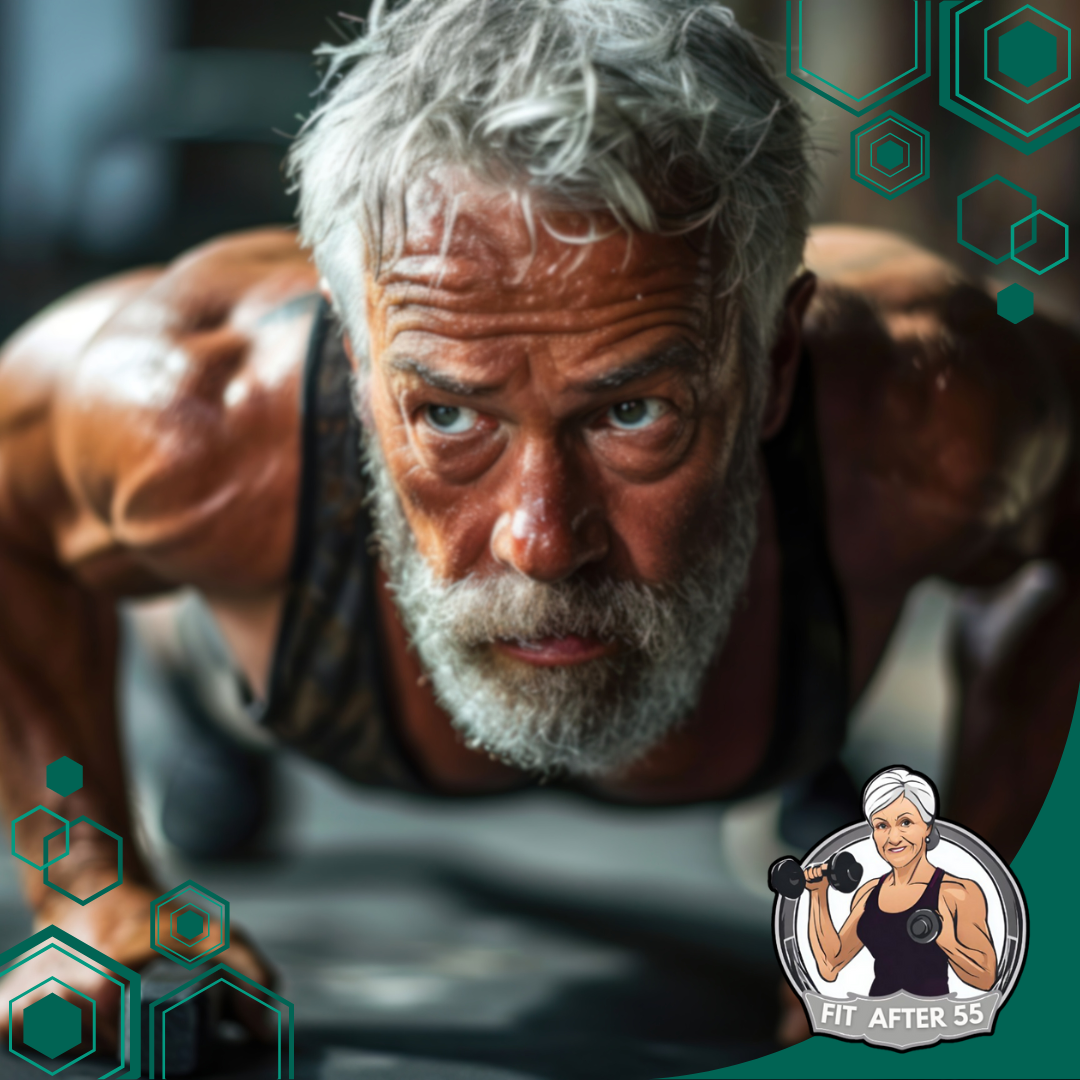
With minimal equipment required and the ability to perform these exercises almost anywhere, isometrics offers a flexible and accessible option for staying fit. Embracing these exercises, alongside proper safety measures and adjustments based on individual needs, can lead to a healthier, more active lifestyle. Whether integrating them into daily routines or setting aside specific times for exercise, seniors can benefit from the ease and effectiveness of isometric training.
Frequently Asked Questions
How Long Should a Beginner Hold an Isometric Exercise for It to Be Effective?
For beginners, start with 10-15 second holds. This is enough to activate your muscles without overdoing it. As you get stronger, you can gradually increase to 30 seconds. Listen to your body, and don’t push too hard too fast.
Can Isometric Exercises Help Seniors Build Muscle Effectively?
Yes, isometric exercises can help build muscle in seniors. They’re especially good for maintaining muscle mass and strength. These exercises put less stress on joints, making them safer for older adults. Consistent practice can lead to noticeable improvements in muscle tone and strength.
What Are Some Simple Isometric Exercises for Strengthening the Back?
Wall angels are great for back strength. Stand with your back against a wall, raise your arms to shoulder height, and slowly slide them up and down. Bridge holds work your lower back. Lie on your back, lift your hips, and hold the position. Seated back extensions can help, too. Sit up straight and try to extend your spine, holding the position for a few seconds.
Stay Fit, Feel Fabulous: Join the Fit After 55 Community!
Discover a world of fitness inspiration at Fit After 55!
Our website (https://www.vitalityseniorliving.com/resources_for_senior/staying-fit-at-55/) is packed with engaging content, expert advice, and product reviews tailored for seniors. Connect with like-minded individuals who share your passion for staying active and healthy on our Facebook page (https://www.facebook.com/fitafter50dotcom/).
Let’s embark on this fitness journey together and prove that age is just a number!

